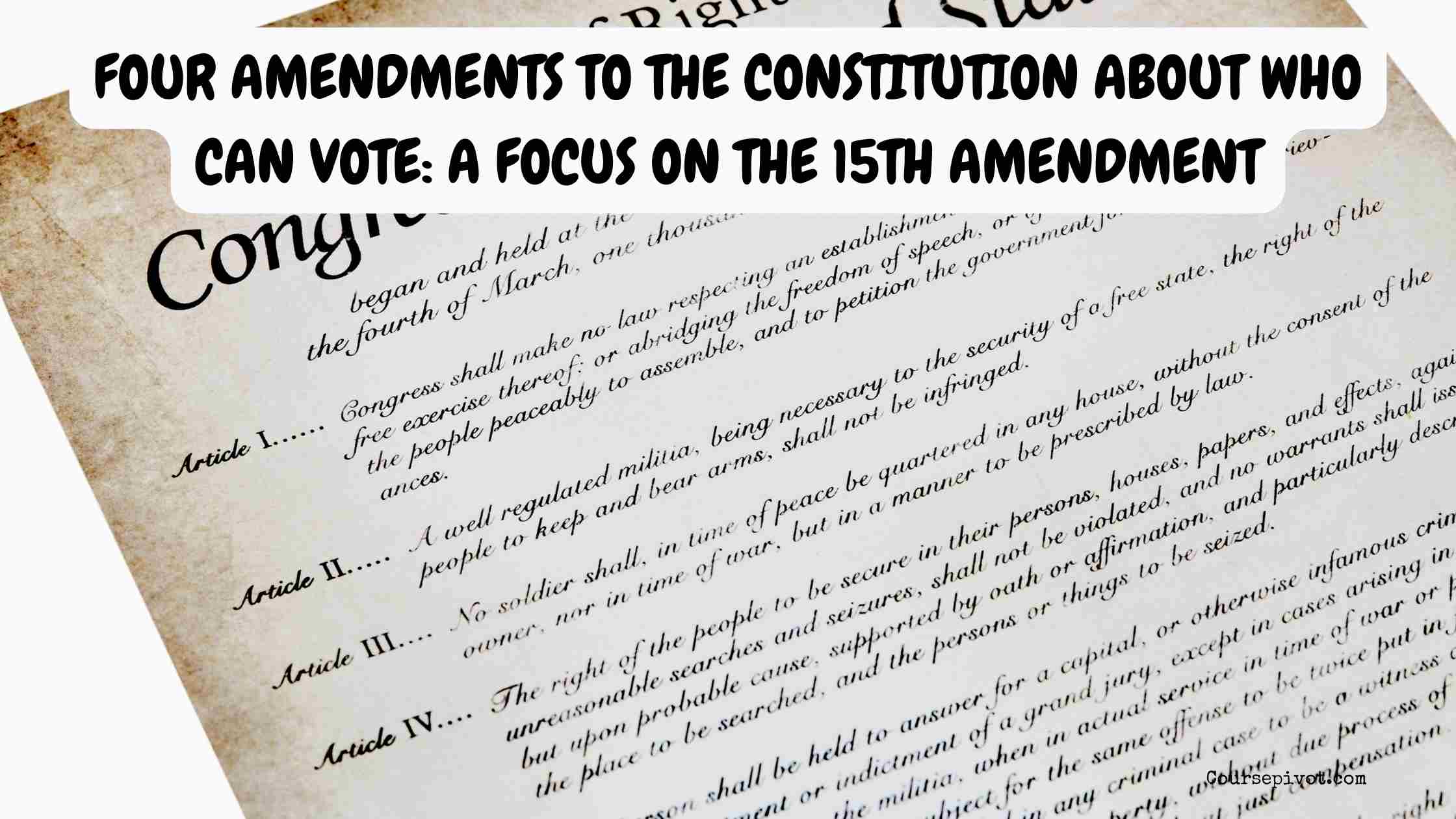
Four Amendments to the Constitution About Who Can Vote – the 15th Amendment
Voting rights are a fundamental part of American democracy. Over the nation’s history, the Constitution has been amended several times to expand and protect these rights. Specifically, four key amendments directly address who can vote, shaping the inclusiveness of the electoral process. Today, I want to describe one of these important amendments—the 15th Amendment—and explain its significance in American history.
What Are the Four Voting Amendments?
Before diving deep into the 15th Amendment, let’s quickly outline the four amendments related to voting rights:
- The 15th Amendment (1870): Prevents denying the right to vote based on race, color, or previous condition of servitude.
- The 19th Amendment (1920): Grants women the right to vote by prohibiting discrimination based on sex.
- The 24th Amendment (1964): Abolishes poll taxes in federal elections, removing economic barriers to voting.
- The 26th Amendment (1971): Lowers the voting age from 21 to 18, expanding the electorate to younger citizens.
Each of these amendments marked a milestone in expanding democratic participation.
- Read our blog on Describe How Zoning Laws Can Protect and Benefit Homeowners
The 15th Amendment: What It Is and Why It Matters
The 15th Amendment, ratified in 1870, was passed during the Reconstruction era following the Civil War. This period was critical for redefining civil rights and the role of formerly enslaved African Americans in the new United States.
The key clause in the 15th Amendment states:
“The right of citizens of the United States to vote shall not be denied or abridged by the United States or by any State on account of race, color, or previous condition of servitude.”
This was a bold statement at the time, legally guaranteeing that African American men could no longer be barred from voting based on their race or past enslavement. It was a foundational step toward racial equality in voting rights.
How Did the 15th Amendment Change Voting Rights?
Before the amendment, many Southern states used laws and practices—such as literacy tests, poll taxes, and intimidation—to prevent Black citizens from voting. The 15th Amendment aimed to outlaw these racial barriers.
However, while it was a critical legal milestone, its implementation faced significant challenges. Many states found ways to circumvent the amendment, and true voting equality for African Americans was not fully realized until the Voting Rights Act of 1965.
Still, I believe the 15th Amendment was a crucial legal and symbolic step that laid the groundwork for future civil rights progress.
Why Is the 15th Amendment Still Important Today?
Even today, the 15th Amendment remains a cornerstone of voting rights protections in the United States. It stands as a reminder that voting rights must be actively defended and that discriminatory practices based on race are unconstitutional.
In my experience studying American history, the 15th Amendment teaches us the importance of persistence. Rights once denied can be won, but constant vigilance is needed to ensure they are upheld.
Expanding Voting Rights Through Constitutional Amendments
In summary, the 15th Amendment is one of four key constitutional amendments that determine who can vote in the U.S. It specifically prevents racial discrimination in voting rights, a critical change after the Civil War.
The other amendments—the 19th, 24th, and 26th—have further expanded voting rights to women, eliminated economic barriers, and lowered the voting age. Together, they form the legal foundation for a more inclusive democracy.
Understanding the 15th Amendment helps us appreciate how constitutional changes have shaped voting rights and how they continue to influence elections today. It reminds us that the fight for equal voting rights is ongoing, but progress is possible through legal protections and active citizen participation.
Cite this article
You can copy and paste your preferred citation format below.
Martin, L. & Arquette, E.. (2025, May 27). Four Amendments to the Constitution About Who Can Vote – the 15th Amendment. Coursepivot.com. https://coursepivot.com/blog/there-are-four-amendments-to-the-constitution-about-who-can-vote-describe-one-of-them/



